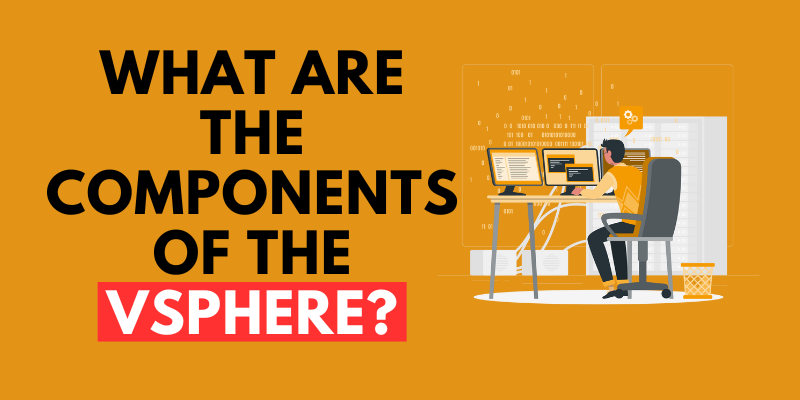
VMware vSphere is a virtualization software component set. These include ESXi, vCenter Server, and other software components that serve various purposes in the vSphere environment. In this blog, we’ve provided What are the Components of the vSphere. Join FITA Academy‘s VMware Training Institute In Chennai to learn more about VMware. It offers advanced certification training and 100% job placement assistance.
vSphere Components
The following software components are included with vSphere:
ESXi
The hypervisor manages virtual machines. Each virtual machine contains a collection of configuration and disc files that, when combined, perform all of the tasks of a physical system.
You run virtual computers, install operating systems, run programmes, and configure virtual machines using ESXi. Identifying the virtual machine’s resources, such as storage devices, is part of the configuration process.
The server manages your virtual machines by providing bootstrapping, management, and other services.
vCenter Server
A service that serves as the network’s central administrator for VMware ESXi hosts. vCenter Server controls the virtual machines and ESXi hosts.
vCenter Server is set up to run in the background on a preconfigured virtual machine. The vCenter Server service is always running in the background. It monitors and manages even when no vSphere Clients are connected, and no one is logged in to the PC where it is located. It needs network access to all of the hosts it maintains.
vCenter Single Sign-On
A component of the vCenter Server administration infrastructure. The vCenter Single Sign-On authentication solution strengthens the VMware cloud infrastructure platform by allowing vSphere software components to connect. Instead of requiring a single component to authenticate a user independently with a directory service such as Active Directory, the vCenter Single Sign-On authentication service provides a secure token exchange mechanism.
The following components are installed when you install vCenter Single Sign-On.
Enroll in the VMware Online Course, Which will help you understand more Concepts about VMware Service.
STS (Security Token Service)
STS certificates allow a vCenter Single Sign-On user to authenticate to any vCenter service that vCenter Single Sign-On supports. STS tokens are issued by the Security Assertion Markup Language (SAML) service. These security tokens represent a user’s identity in each of the vCenter Single Sign-On identity sources.
Administration server
Users with vCenter Single Sign-On administrator rights can configure the vCenter Single Sign-On service and manage users and groups using the vSphere Client by accessing the administration server.
vCenter Lookup Service
The vCenter Lookup Service stores topology information about the vSphere infrastructure, allowing vSphere components to connect safely. When you install other vSphere components, you are prompted for the Lookup Service URL unless you use Simple Install.
VMware Directory Service
The directory service for the sphere.local domain. This multi-tenant, peer-replicating directory service provides an LDAP directory on port 389. In multisite mode, updating VMware Directory Service content in one VMware Directory Service instance causes the VMware Directory Service instances connected with all other vCenter Single Sign-On nodes to be automatically updated.
vCenter Server database
Persistent storage is used to keep track of the status of each host, virtual machine, and user-controlled in the vCenter Server environment. The vCenter Server database can be located remotely or locally on the vCenter Server server.
tcServer
Serval vCenter Server functions are implemented as web services, which necessitate the use of the tcServer. As part of the vCenter Server installation, the server is installed on the vCenter Server computer.
CIM/Hardware Status tab, Performance charts, WebAccess, Storage Policy-Based services, and vCenter Service status are all features that require the tcServer to be operational.
Conclusion
In this blog, we have discussed What are the Components of the vSphere. To learn more about concepts and become a programming expert, join the Best VMware Training Institute In Chennai, which provides the best Certification Training with Placement Support.
